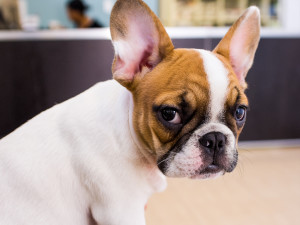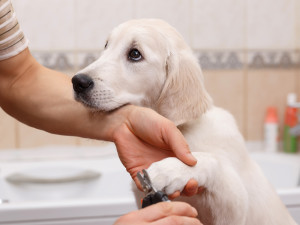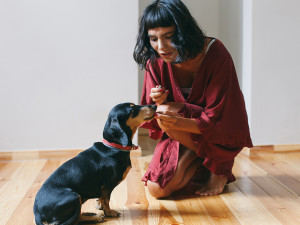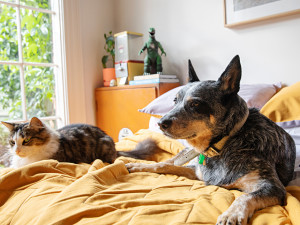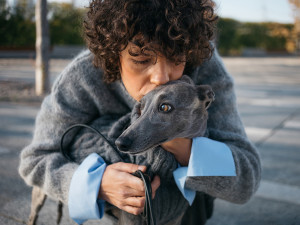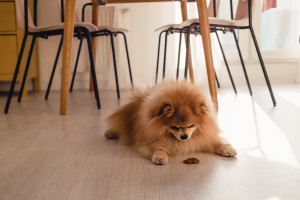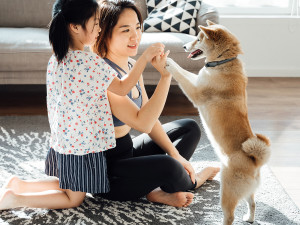9 Unexpected To-Dos for New Pet Parents
Sound advice from seasoned dog and cat parents who have been there
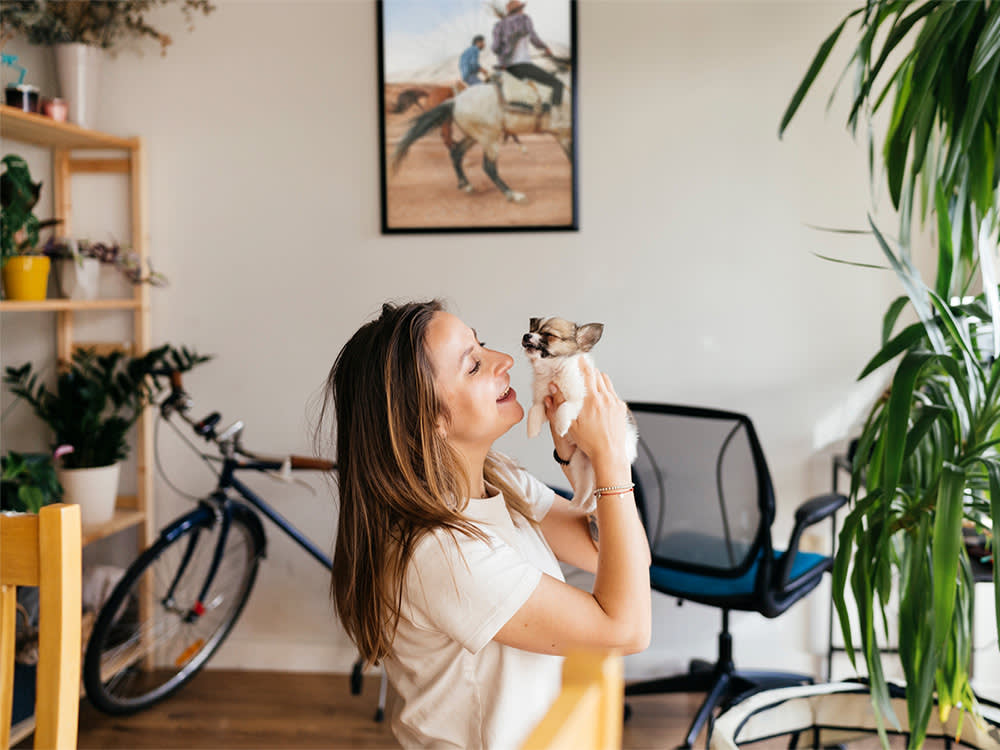
Share Article
If you’re reading this article, you’re probably already a next-level new cat or dog parent. You’ve crossed all the standard stuff off your list, like researching vets and shopping for essential pet supplies. Now you’re just Googling around to see if there’s anything you’ve missed. An overachieving pet parent – we love it!
Wait, don’t go. We asked a bunch of seasoned pet parents to share all the things they wish someone had told them before they brought home their pups and kitties. Here’s what they had to say…
1. Schedule your first vet appointment
You read all the reviews and maybe even called a vet for advice before adopting or purchasing your pet, but have you made an appointment?
It’s smart to get them in to see a vet within the first week or so of bringing them home for an exam, blood work, vaccines and preventatives. If possible, book your first visit before you even pick up your new dog or cat. And be sure to ask your vet about the right time to spay/neuter your pet.
2. Update your pet’s microchip information
If you recently adopted an animal, they may already have a microchip, which allows them to be traced back to you if they’re lost, then found and taken to a rescue centre that can read the microchip number with a scanner. This is incredibly helpful if you keep your contact information updated. Make sure to do that as soon as you get your pet (and again if your address or phone number changes). Keep in mind a microchip is not a GPS system so if you l ose your pet, don’t sit back and wait by the phone.
3. Get your pet microchipped if it hasn’t been already
In England, Northern Ireland, Scotland and Wales, it’s compulsory to make sure your dog is fitted with a microchip and registered on a database by the time it’s eight weeks old. Recently, it also became obligatory for cats in England to be microchipped and registered on a database by the time they’re 20 weeks old.
You can be fined up to £500 if your dog or cat isn’t microchipped when they need to be. Make sure you select a register from this government-approved listopens in new tab, otherwise you can still be fined.
4. Designate an emergency contact and locate the nearest out-of-hours vet
Yes, your pet needs an emergency contact just like you do. This is someone who can take care of them in the event that you can’t. Ideally this would be someone who lives close by, loves your cat or dog as much as you do and is very reliable in a crisis.
This isn’t something you want to be scrambling to figure out in the middle of an emergency, which (trust us) you can count on happening at the most inopportune of times. Make sure you bookmark the closest out-of-hours vet.
5. Make a first-aid kit (and maybe learn pet CPR too)
If your dog or cat gets hurt, you don’t want to waste precious time tracking down all the supplies that will help. A pet first-aid kit should include things like rolled gauze, elastic bandages, scissors, a digital thermometer, eye dropper, hydrogen peroxide and antihistamines.
Let’s hope you never need to perform CPR on your pet, but it’s good to know just in case. First Aid for Petsopens in new tab offers both practical and online courses, and other courses are available across the country.
6. Put together a doggie (or kitty) go-bag
Hopefully you’ve already stocked up on some emergency supplies in the event that you need to evacuate your home quickly. Now add pet stuff to that stash. This should include your pet first-aid kit, food and water for a week, a couple of weeks’ worth of medication (if applicable) and a copy of their vaccination history.
7. Sign up for puppy socialisation classes and/or basic obedience training sessions
Kick-starting a puppy training regime can be a steep learning curve, especially for your dog. The rise of virtual training sessions during the pandemic has been a godsend to many new pet parents, but for others in-class dog obedience training is a great place to start. The ideal training schedule will depend on you and your dog. In a study on dog training frequency, researchers foundopens in new tab that dogs trained one to two times a week learned a new behaviour faster than dogs trained daily. Consistency and play training also play big roles in how quickly dogs learn new behaviours.
Speaking of playtime, there’s one thing you can do for your puppy that will truly influence the kind of dog they become: puppy classes. You might be under the impression that puppy classes are about teaching your pup basic commands, but the goal is actually socialisation. Experiences puppies have within their first 14 weeks of life make a permanent imprint on their brain about what’s safe and unsafe in the world.
8. Find a trusted dog walker or cat sitter
Sadly, even the most flexible of schedules can’t always accommodate the outing your pup deserves. That’s where dog walkers come in. But not all dog walkers are professionals. You want to find a walker who’s not only good with dogs but good with your dog, right? Preparing your pup for a dog walking service is also vital.
Cats are independent little beasts that can seem blasé about being left alone, so long as their food dishes are full and their litter boxes are not. Despite their low-maintenance vibe, they do get lonely and rascally when left to their own devices. If you don’t want to return home from holiday to find your cat has knocked over everything, then anything longer than an overnight trip calls for a cat sitter.
9. Review all the things that are toxic to pets
And there are a lot of them. From raisins to rhododendrons, read up on the foods and plants that are toxic to dogs and cats, and also be ware of other seemingly innocuous items that are dangerous or deadly if your pet ingests them. It always pays to have the Animal Poison Lineopens in new tab on speed dial.
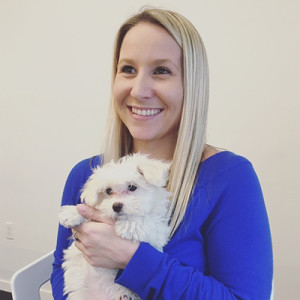
Casey Gueren
Casey Gueren is a writer, editor, and content strategist. You can find her work at SELF, BuzzFeed, Women's Health, Cosmopolitan, and others.
Related articles
How to Tell If Your Dog Is a Hugger – Or Not
Boundaries, folks. Boundaries
![A Pomeranian dog sitting on the floor beneath a table looking at a treat awaiting permission to eat it]()
Step-by-Step Dog Training Guide for ‘Leave It’
This simple dog training skill could save your dog’s life
![French bulldog puppy looking scared at vet]()
10 Things to Ask At Your First Vet Visit
There are no stupid questions when it comes to your dog’s health
![cat and dog laying on bed together]()
What’s the Deal With Pet Insurance?
It covers your pet so you can get that broken leg fixed – while keeping your wallet happy
![mom and daughter playing with puppy]()
How to Introduce Your New Dog to Your Kids
They’ll always remember their first childhood pet – this intro is just the beginning

